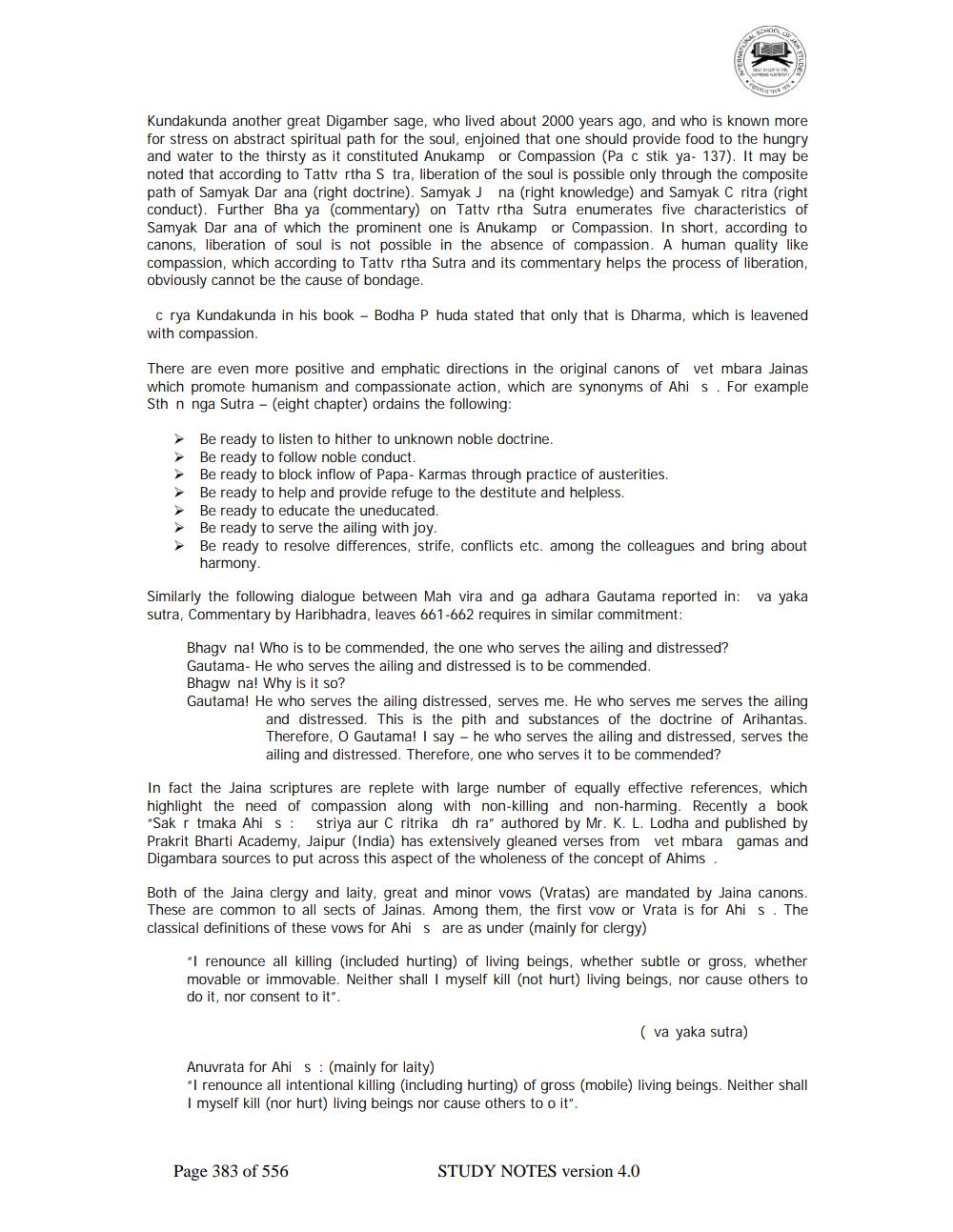________________
Kundakunda another great Digamber sage, who lived about 2000 years ago, and who is known more for stress on abstract spiritual path for the soul, enjoined that one should provide food to the hungry and water to the thirsty as it constituted Anukamp or Compassion (Pa c stik ya- 137). It may be noted that according to Tatty rtha S tra, liberation of the soul is possible only through the composite path of Samyak Dar ana (right doctrine). Samyak na (right knowledge) and Samyak Critra (right conduct). Further Bha ya (commentary) on Tattv rtha Sutra enumerates five characteristics of Samyak Dar ana of which the prominent one is Anukamp or Compassion. In short, according to canons, liberation of soul is not possible in the absence of compassion. A human quality like compassion, which according to Tattv rtha Sutra and its commentary helps the process of liberation, obviously cannot be the cause of bondage.
c rya Kundakunda in his book - Bodha P huda stated that only that is Dharma, which is leavened with compassion.
There are even more positive and emphatic directions in the original canons of vet mbara Jainas which promote humanism and compassionate action, which are synonyms of Ahis. For example Sth n nga Sutra - (eight chapter) ordains the following:
Be ready to listen to hither to unknown noble doctrine. Be ready to follow noble conduct. Be ready to block inflow of Papa - Karmas through practice of austerities. Be ready to help and provide refuge to the destitute and helpless. Be ready to educate the uneducated. Be ready to serve the ailing with joy. Be ready to resolve differences, strife, conflicts etc. among the colleagues and bring about harmony.
Similarly the following dialogue between Mah vira and ga adhara Gautama reported in: va yaka sutra, Commentary by Haribhadra, leaves 661-662 requires in similar commitment:
Bhagv na! Who is to be commended, the one who serves the ailing and distressed? Gautama. He who serves the ailing and distressed is to be commended. Bhagw na! Why is it so? Gautama! He who serves the ailing distressed, serves me. He who serves me serves the ailing
and distressed. This is the pith and substances of the doctrine of Arihantas. Therefore, O Gautama! I say - he who serves the ailing and distressed, serves the ailing and distressed. Therefore, one who serves it to be commended?
In fact the Jaina scriptures are replete with large number of equally effective references, which highlight the need of compassion along with non-killing and non-harming. Recently a book "Sakr tmaka Ahis: striya aur C ritrika dh ra" authored by Mr. K. L. Lodha and published by Prakrit Bharti Academy, Jaipur (India) has extensively gleaned verses from vet mbara gamas and Digambara sources to put across this aspect of the wholeness of the concept of Ahims.
Both of the Jaina clergy and laity, great and minor vows (Vratas) are mandated by Jaina canons. These are common to all sects of Jainas. Among them, the first vow or Vrata is for Ahis. The classical definitions of these vows for Ahi s are as under (mainly for clergy)
"I renounce all killing (included hurting) of living beings, whether subtle or gross, whether movable or immovable. Neither shall I myself kill (not hurt) living beings, nor cause others to do it, nor consent to it".
( va yaka sutra)
Anuvrata for Ahis : (mainly for laity) "I renounce all intentional killing (including hurting) of gross (mobile) living beings. Neither shall I myself kill (nor hurt) living beings nor cause others to o it".
Page 383 of 556
STUDY NOTES version 4.0




